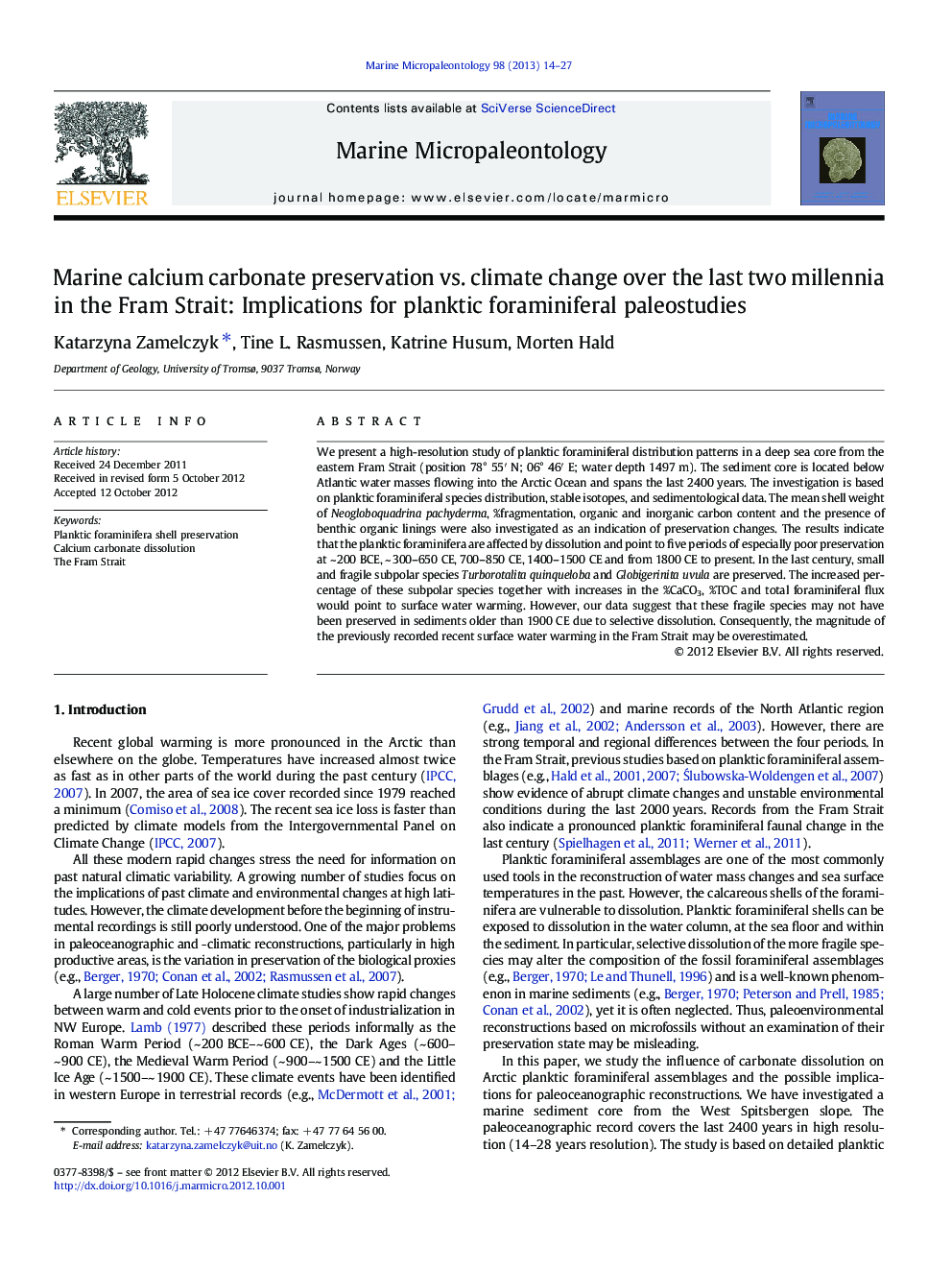| Article ID | Journal | Published Year | Pages | File Type |
|---|---|---|---|---|
| 4748922 | Marine Micropaleontology | 2013 | 14 Pages |
We present a high-resolution study of planktic foraminiferal distribution patterns in a deep sea core from the eastern Fram Strait (position 78° 55′ N; 06° 46′ E; water depth 1497 m). The sediment core is located below Atlantic water masses flowing into the Arctic Ocean and spans the last 2400 years. The investigation is based on planktic foraminiferal species distribution, stable isotopes, and sedimentological data. The mean shell weight of Neogloboquadrina pachyderma, %fragmentation, organic and inorganic carbon content and the presence of benthic organic linings were also investigated as an indication of preservation changes. The results indicate that the planktic foraminifera are affected by dissolution and point to five periods of especially poor preservation at ~ 200 BCE, ~ 300–650 CE, 700–850 CE, 1400–1500 CE and from 1800 CE to present. In the last century, small and fragile subpolar species Turborotalita quinqueloba and Globigerinita uvula are preserved. The increased percentage of these subpolar species together with increases in the %CaCO3, %TOC and total foraminiferal flux would point to surface water warming. However, our data suggest that these fragile species may not have been preserved in sediments older than 1900 CE due to selective dissolution. Consequently, the magnitude of the previously recorded recent surface water warming in the Fram Strait may be overestimated.
► Paleoceanograpy and preservation of planktic foraminifera, eastern Fram Strait. ► Dissolution of CaCO3 over the last 2400 years due to high organic productivity. ► Preservation of small dissolution-prone species at the core top (last 100 years). ► Overestimation of the last century sea surface warming due to dissolution effects.
